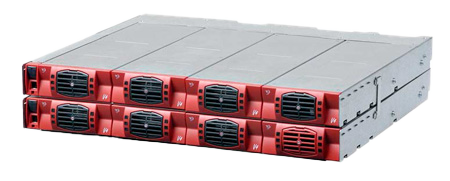One of the most important features of the TSI system is the disconnect capability. The TSI inverter has at least 3 disconnection levels in series (i.e. relay, fuse…) on each power port, as well as a galvanically isolated dual communication bus. The communication is thus fault-tolerant, each bus is capable of independently ensuring synchronization, load sharing and data communication.
The inverter module has two inputs – one for connecting to the DC network and the other for the AC network. When powered from the DC network, the module works like a classic inverter. In the EPC (Enhanced Power Conversion) mode, the load is supplied from the AC network. Despite all the disturbances (harmonics, ripples, short spurious impulses) usually transmitted by the network, a pure sinusoidal voltage is supplied to the load, even if the load is not linear. Pure sine wave at the output and ideal power factor at the input are achieved without drawing power from the DC source. With the TSI concept, current and voltage filtering is similar to that of a rectifier in combination with an inverter (on-line mode), but with significantly better efficiency.
GENERAL FEATURES
Compact 19“ system with an overall depth of just 364 mm
1U inverter system with total output power up to 3000 VA
Parallel operation in redundant system (TRS – True Redundant System)
Nominal output power of inverter module 750 VA / 525 W
Inverter modules are hot-swappable
Static switch (STS) built into the inverter module
Dual input sources (AC & DC)
AC/AC conversion with separated AC output from AC input
High efficiency AC/AC conversion – up to 93%
Possibility to build 1 or 3 phase inverter systems
Application
Telecommunication technology
IT
Industrial and security technology
